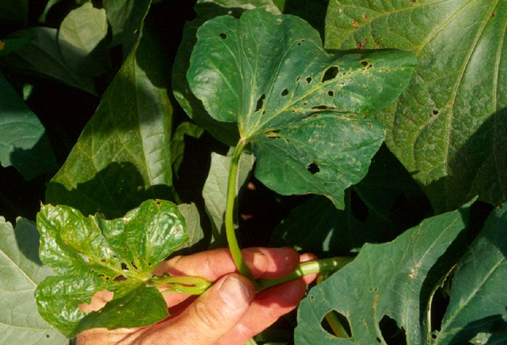Organic Gardening
Symptoms of Nutrient Deficiency In Plants
The symptoms of nutrient deficiency in plants appear when a plant is deprived of required nutrients, it displays many symptoms. Leaves begin to die, growth starts to slow down or stops altogether, photosynthesis (making the food we eat) stops and so does plant health. Symptoms of Nutrient Deficiency In Plants usually appear in two ways. First, there is a sudden change in plant behavior, such as growth that is radically different from what would be normal for that type of plant. And second, nutrients are used up too quickly or the nutrients are not being absorbed properly by the plant.
1. Abnormal Physical Appearance
The first symptom of Nutrient Deficiency In Plants occurs when the plant’s normal growth rate, color, shape, texture and quality of leaves and stems drop. Leaves may become curled, they may be smaller in size than they should be, the petals may drop or thicken, the stems may be brittle and fall over, they may lose their color, thicken or turn yellow and/or fall off. Symptoms of nutrient deficiency In plants can also include weak growing points, a lack of flower blooms and leaf color.
2. Dry Stem and Leaves
The leaves and stems of the plant can become dry due to nutrient deficiency. This is often followed by a yellowing or browning of the foliage. Leaves look slimy and appear to have little or no nutrients. Some leaves appear to be coated with a white powdery substance, which cannot be removed from the plant by washing.
3. Inability to Absorb Enough Nutrients
One of the symptoms of nutrient deficiency in plants is that when plants are unable to absorb enough nutrients during the growing season. During this time, plants’ leaves, flowers and branches do not receive enough of the nutrients they need to grow. Leaves become small and dark, the flower buds become deformed and the plant’s fruit develop in conditions that promote rot. Flowers and buds will also wither and die. When leaves appear to be falling off rapidly, this could signal leaflet failure, too much water or too much sun exposure. Deficient plants may also exhibit sluggish growth, while healthy plants grow much more quickly and evenly.
4. Lack of Essential Trace Minerals
A lack of trace minerals such as potassium, calcium, iron, manganese, chromium and sulfur. When these minerals are present in the soil, the plants’ roots can absorb them from the soil. However, if there is a lack of these essential trace minerals, the roots do not get the help they need to absorb these essential nutrients. This deficiency can cause the plant to wilt, remain dormant or shrink.
5. Lack of Hydration
One of the symptoms of nutrient deficiency in plants can also be caused by a lack of hydration. When plants are suffering from a deficiency of dissolved oxygen, leaves look pale and the plant may appear deformed. The leaves may also have yellowed or discolored appearance to them. This symptom can result to improper plant health, premature death or stunted growth.
6. Symptoms due to Lack of Specific Nutrients
If there is a severe deficiency of one nutrient, another nutrient must be added. This is because plant life cannot grow or survive without essential nutrients. There are several solutions to deficiency. A deficiency of iron or manganese may lead to leaf wilting or stunted growth. A deficiency of calcium or magnesium results to soft or brown colored leaves and can affect the plant’s root structure. A deficiency of potassium or sulfur causes yellowing or browning foliage and can affect the plant’s root structure.
7. Maintaining the Nutritional Levels
Plants use soil as their food source. Soil consists of various elements such as sand, clay, silt and mud. Different elements are required by each plant to survive. The soil condition must be maintained to meet the specific needs of each plant. The nutrient level in the soil must be checked often to make sure it is still good.
8. Causes of Nutrient Deficiencies
Nutrient deficiencies in plants result when there is an excess of some nutrients or too many minerals in the soil. The excess of some nutrients causes the roots of the plant to be too long for too long. This produces root rot. The overuse of water and fertilizer also causes the roots of the plant to grow too long. The roots of the plant are also damaged by these elements. In cases like this, it is best to get advice from a professional before attempting to correct the problem yourself.
9. Conclusion
You can make sure that your garden is getting enough of the right nutrients by purchasing a soil test kit at your local garden center. It will provide you with a complete report of nutrient levels in your soil. Look for instructions on how to add the recommended amounts of nutrients to your soil mixture. Plants need the right nutrients in order to grow healthy. If your plants don’t get the proper nutrients, they won’t th

